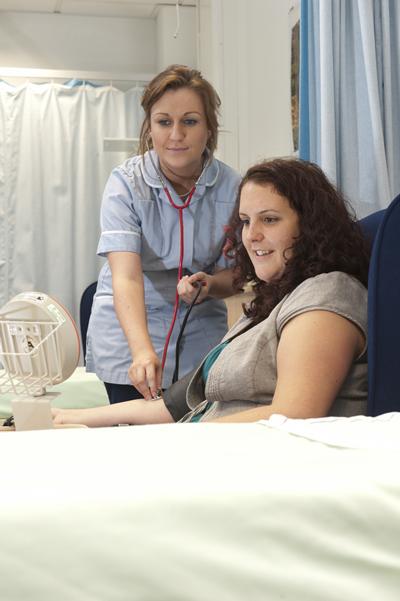How many nurses do you need...?

When I told my brother I was researching whether nurse staffing levels affect quality of care in hospitals, he answered directly: of course they do. Next question please.
He wasn’t the only one to find my choice of research topic almost laughable. It seems obvious that the number of nurses on duty will affect nurses’ ability to deliver all the care needed by patients. Decades of research support this view: hospitals with better registered nurse (RN) staffing levels have better patient outcomes . When I present the research findings to nursing audiences the reaction verges on outrage. We’ve known this for years - why waste time and money on researching the blindingly obvious?
In the last couple of years, following the Inquiry by Sir Robert Francis into poor care and high death rates at Mid Staffordshire, more and more people have heard about ‘safe-staffing’ and the importance of having enough nurses on duty. A few also know about the government’s policies in response to Francis: for example to put the patient first in decisions about staffing, and to require hospitals to publish data on how often staffing levels fall below the planned level.
So three years after Francis, have the policies made a difference? Have we now got enough nurses on wards and in the community to meet patients’ needs safely?
In 2010, our research found that almost half of the 400 hospital wards surveyed had staffing levels where RNs were caring for 8 patients or more. This is the level that NICE suggest is used as a ‘warning level’ to prompt review, as it is associated with increased risk of harm to patients. We cannot say whether levels have improved because this data is not routinely collected but other data shows a continued shortfall in nurse staffing numbers. Ninety-three per cent of Trusts report a RN supply shortage with high vacancy levels . Nine out of ten acute hospitals are staffed below the level planned.
To plug the staffing gaps, hospitals have resorted to recruiting nurses from overseas and spent more on temporary nurse staffing. But this is an expensive short-term fix, which is not sustainable.
The obvious longer term solution is to train more RNs. It’s good news, particularly on International Nurses Day, that nursing remains a very popular career choice. There are typically nine applicants for each nursing degree place available in the UK.
But despite Health Education England, who is responsible for planning nurse training, saying 3,000 extra RN places were needed, only 300 spaces were funded, due to their budget being cut in the spending review. Nursing is once again on the occupational shortage list. Finances, not workforce planning, have dictated the decisions on how many nurses to train. As the Migration Advisory Committee put it, this is a shortage of the system’s own making. The NHS should be training the registered nurses it needs.
If you’re a nurse, or related to one, the fact that there are not enough RNs on duty will not be news to you. You will be used to working for 12 hours and having to skip breaks. Eighty-six per cent of you will have left necessary care undone on your last shift due to lack of time . If you’ve been a patient in the last year, or know someone who has, you have likely noticed how stretched staff are. The recurring theme from patients and relatives I talk to is: what care we had was good – but staff just didn’t seem to have enough time.
Having enough registered nurses – i.e. those with a minimum of 3 years of training – on duty is critical, not just to the quality of care that patients receive, but to their eventual outcome. Our research found that the chance of death for patients in hospitals that have good nurse staffing levels (an average of 6 patients or fewer for every registered nurses) was 20 per cent lower than on wards where each RN has an average of 10 patients or more.
In the USA today, nurses are ‘taking DC’ to campaign for safe nurse staffing levels and protect patients from harm. Yet in England the NHS staff and managers I meet see little opportunity for things to change. For many nurses – even those in national leadership positions – it feels as though the window of hope that Francis’s report opened, is now closed and they must square up to the challenge on managing within the budgets that are allocated to them. Staffing according to finances, not need.
Two things went wrong at Mid Staffs: the hospital took decisions about the workforce that were financially driven without considering the risk to patients; and staff got used to working in poor conditions, to making do and to ‘getting on with it’ without challenging the lack of staff. Patients and their relatives paid a heavy price for these compromises.
We can’t keep accepting compromises that patients ultimately pay the price for. When we ‘make do and mend’ it’s care quality and patient lives that suffer. These aren’t our compromises to make.
As a researcher I cannot change the way of the world. But I can keep collecting data that finds out if we have enough registered nurses to provide care safely. I can present these findings – to nurses, managers, policy makers and people like you, even if the results seem obvious. We often hear that some nurses are short of compassion, but for the overwhelming majority of the profession, this is simply not true and there is certainly no evidence that shows that this is the problem underlying current concerns about quality. We do however have ample evidence that they are often short of time, compromising their ability both to show that compassion and to maintain safety. Safe staffing is not an optional extra.